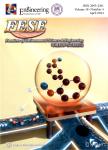Pollutant reduction effectiveness of low-impact development drainage system in a campus
Pollutant reduction effectiveness of low-impact development drainage system in a campus作者机构:Beijing Water Science and Technology Institute Chegongzhuang West Road 21 Haidian District Beijing 100048 China
出 版 物:《Frontiers of Environmental Science & Engineering》 (环境科学与工程前沿(英文))
年 卷 期:2017年第11卷第4期
页 面:113-120页
核心收录:
学科分类:12[管理学] 02[经济学] 0202[经济学-应用经济学] 0830[工学-环境科学与工程(可授工学、理学、农学学位)] 1201[管理学-管理科学与工程(可授管理学、工学学位)] 020205[经济学-产业经济学] 08[工学] 0815[工学-水利工程]
主 题:Low impact development Rainwater harvesting Non point source pollution reduction Campus
摘 要:Building a rainwater system based on the idea of low-impact development (LID) is an important aspect of the current "sponge city" construction in China. The "sponge city" concept emphasizes that the runoff can permeate the soil or be stored temporarily, and rainwater could be used again when it is needed. Beijing is one of the earliest cities to study rainwater harvesting and LID techniques in *** long-terua monitoring of rainfall, runoff flow, and water quality of a campus demonstration project in Beijing, the runoff quantity and pollutant concentration variations have been analyzed. Furthermore, the runoffreduction effects of single LID measure, such as green roof, filtration chamber, and permeable pavement, have been investigated. Additionally, the overall reduction effectiveness of the LID system on the average annual rainfall runoff and pollution load has been discussed.



